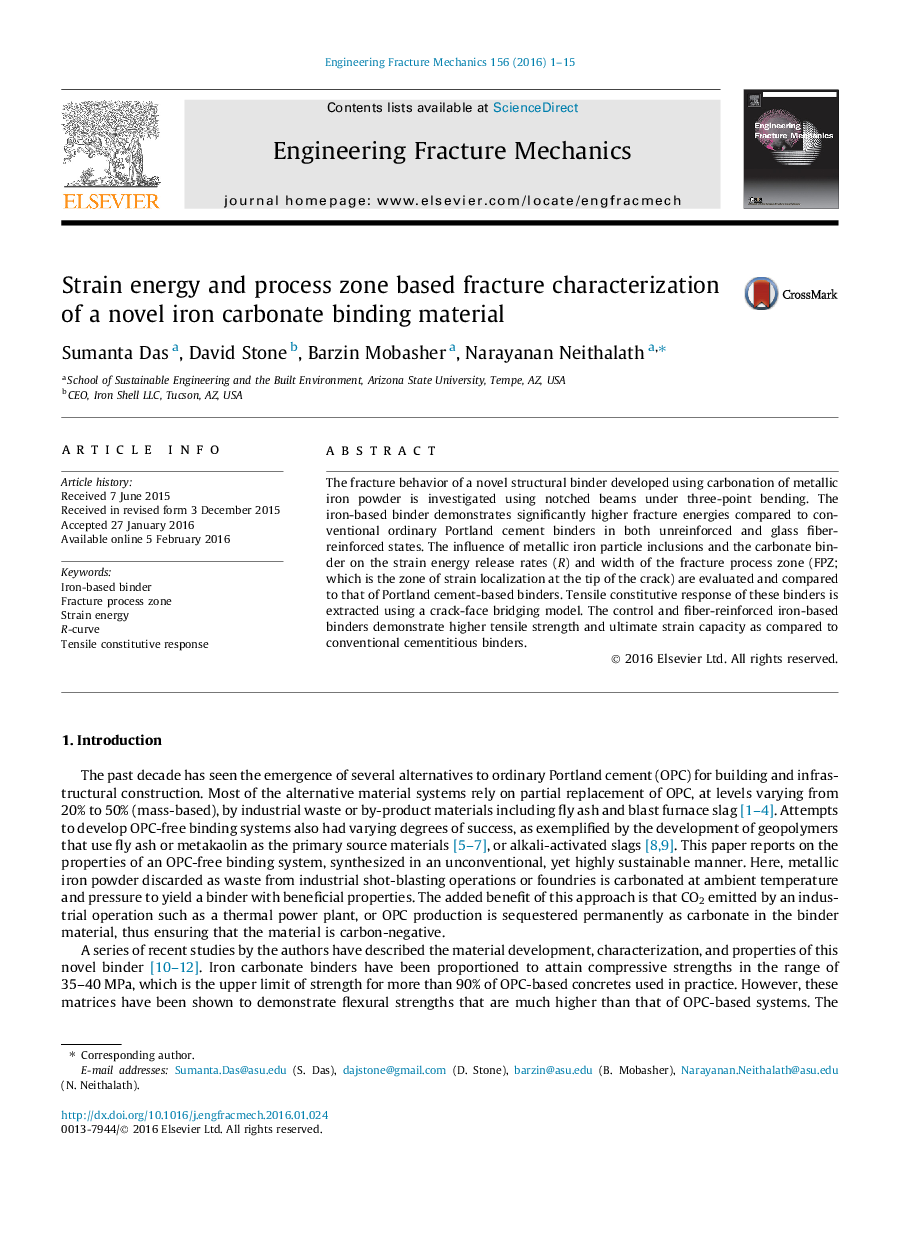| Article ID | Journal | Published Year | Pages | File Type |
|---|---|---|---|---|
| 770360 | Engineering Fracture Mechanics | 2016 | 15 Pages |
The fracture behavior of a novel structural binder developed using carbonation of metallic iron powder is investigated using notched beams under three-point bending. The iron-based binder demonstrates significantly higher fracture energies compared to conventional ordinary Portland cement binders in both unreinforced and glass fiber-reinforced states. The influence of metallic iron particle inclusions and the carbonate binder on the strain energy release rates (R) and width of the fracture process zone (FPZ; which is the zone of strain localization at the tip of the crack) are evaluated and compared to that of Portland cement-based binders. Tensile constitutive response of these binders is extracted using a crack-face bridging model. The control and fiber-reinforced iron-based binders demonstrate higher tensile strength and ultimate strain capacity as compared to conventional cementitious binders.
